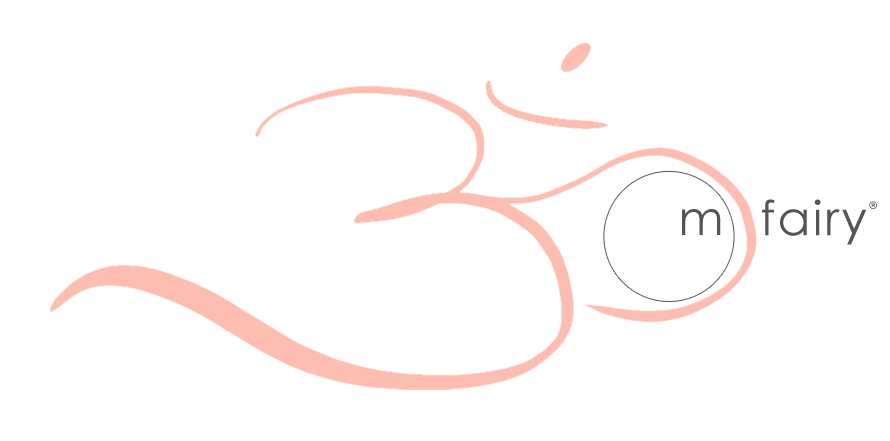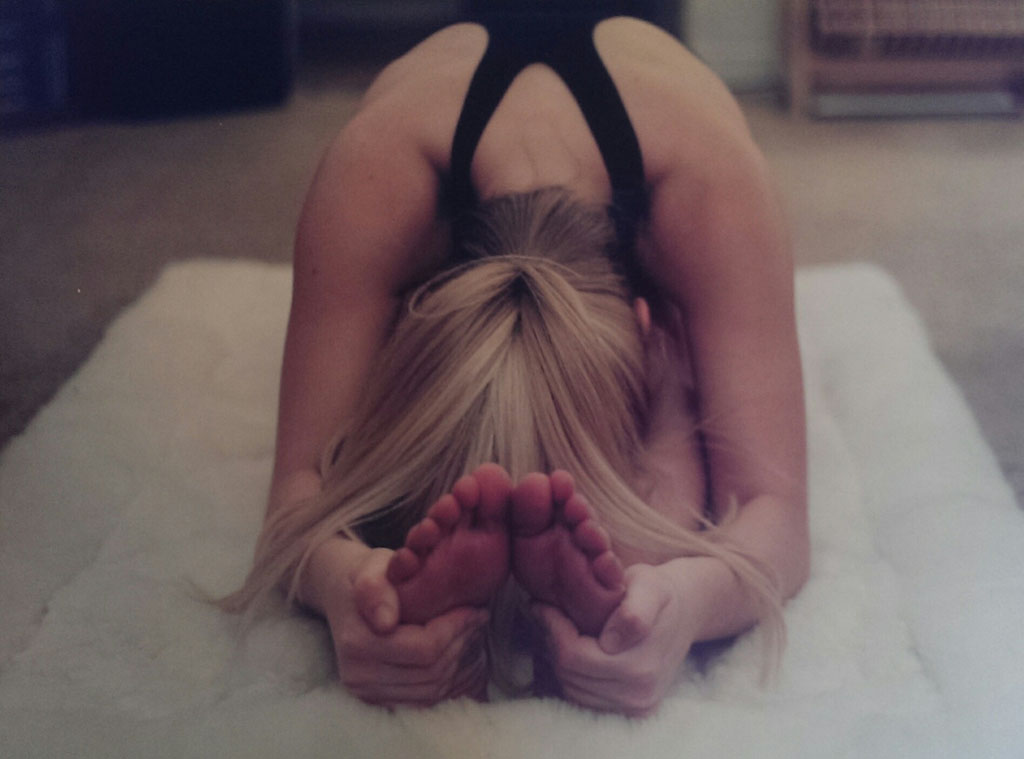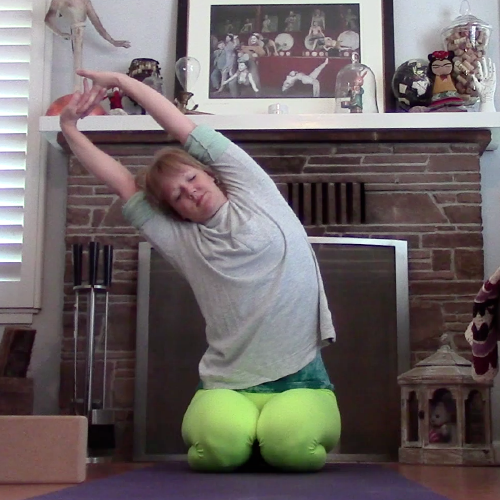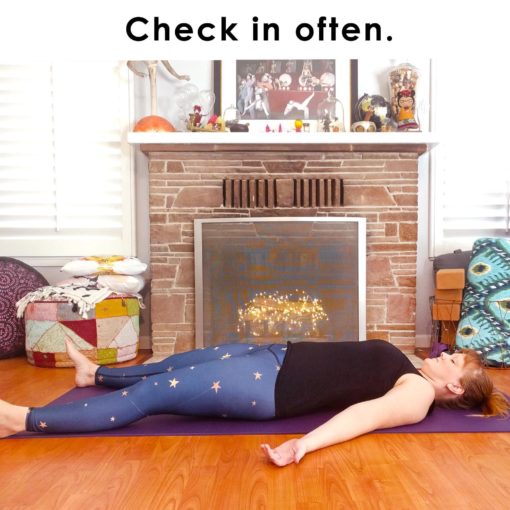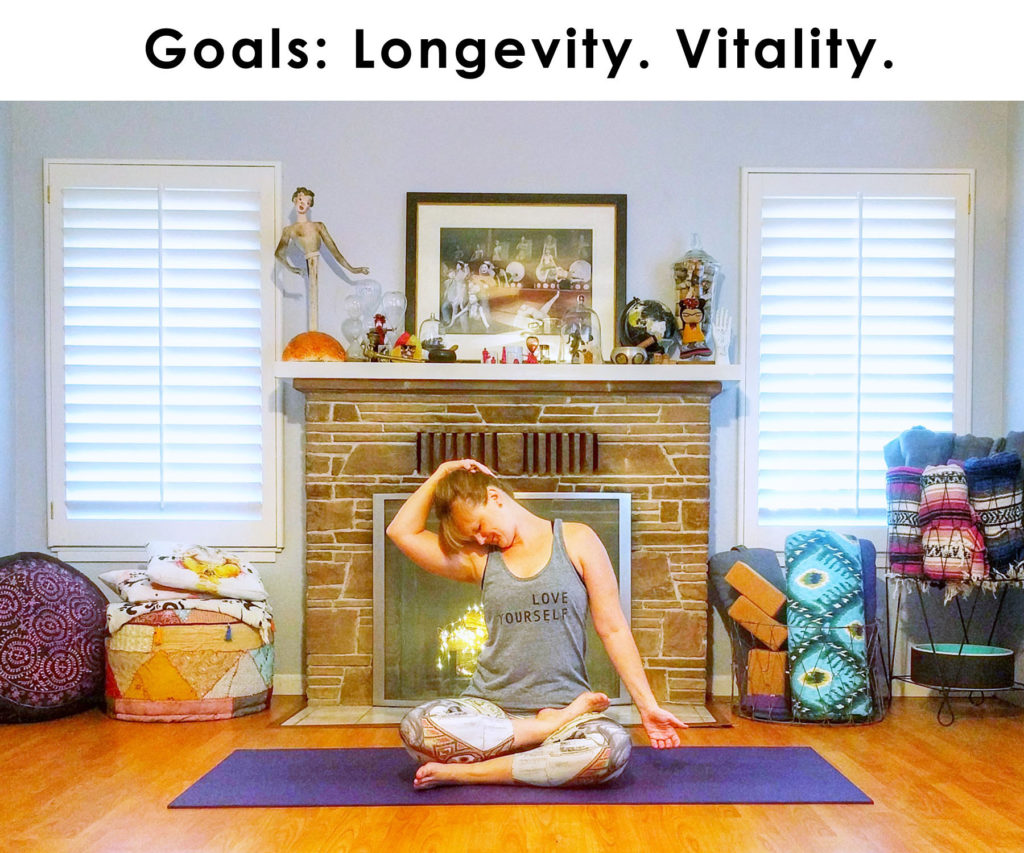
The goal of my yoga practice is not to be the best yogi, doing the prettiest backbends, achieving the hardest arm balances, folding myself into an origami-like state. I think there is a place for challenge and playfulness in the practice, but the main reason I practice asana is to keep my body in good shape for life. I want to be mobile when I’m 60, 70, 90 if I make it to any of those ages. I want to be able to work in my garden, go on a hike, walk down the street, trip, and catch myself. I want to be able to tie my own shoes and get up off the floor with ease. I want to be able to look over my shoulder or pick something up off the floor. Really simple things. Simple things that I take for granted, but I know that as we age, those things can fall away if what we do day to day is sit in a chair, on a couch, in a car. Our bodies become really good at that, and not so good at all those other things. For those of you who don’t know, this list is actually what a lot of people are trying to achieve with their yoga practice as they age. Improving balance because as we age, the bones grow more brittle and can break if we fall, because after a lifetime of wearing shoes, we lose sensitivity in our feet and fail to have the nerve responses needed react before we teeter over. Ensuring that if I do end up on the ground I can get up without help. Being self-sufficient.
I’m lucky enough to have spent a lot of time with my grandparents and great grandparents, and that I had good models growing up for what my life could be like. These are people who worked in the garden into their 80s and 90s, who can wander around the trails in the Blue Ridge Mountains – maybe not the most vigorous ones, but they could get out and stroll along, enjoying nature. In learning that this is not always the case for those who grow older, it really put my goals in perspective. Especially as I see younger and younger people not able to do some of these simple things.
So longevity as a goal. And vitality. To be strong, energetic, and enjoy each moment with what I have available in that moment. For me this means my practice isn’t about pushing myself past the brink. It isn’t about struggling to achieve a pose or pushing my body into a place that it’s not ready to go. It’s about inquiry and seeing what I am capable of today. It’s about seeing where my body wants to move with subtle movements and breath and concentration, and to be joyous and happy with where it arrives at. Appreciating what I can do in this moment, and exploring how that changes over time – for better and worse in the traditional sense of achieving an asana. In approaching asana this way, there’s less chance of injury and hurting yourself, and that leads to longevity and vitality in your practice. In addition to all of those things mentioned before, I want to be able to do this practice for a very long time, and I want it to fuel me, both mind and body. I can’t do that if I’m pushing myself so hard that I’m exhausted, if I’m struggling so much that I can’t feel I’m close to overstretching or falling or that I’m exacerbating an area already sensitive, ripe for injury.
This is the approach I have for Flow & Hold®, though it is completely up to the student whether they are ready to really hear this approach and honor it. I get it. As we see fellow yogis around us, achieving something we want to achieve, whether it’s in a class or online, there’s the part of your mind that goes to the challenge, the push and need to get there too. I will talk about my approach to challenging yourself in a couple of days, but for now, think about your ultimate goal, the end goal. Is it an advanced pose, or is it to be a functional human? Possibly it’s both. Do you hope to live a long life? Then you have plenty of years to work towards that advanced pose. It doesn’t have to come this day, this month, or this year.
Back to longevity and my goals in old age, the simple ones. One recent study correlated the ability to get up from the floor without assistance to a longer, healthier life. In my sequencing, you’ll see that we move up and down quite a bit. Instead of grouping all standing postures together, all seated postures together, etc. I’ll move from standing to seated to standing again, to prone and so on. Whether this study is right that getting up off the floor without assistance leads to long life, it’s a life skill I’d like to have, so I work on it. Strengthening the ankles and areas around them becomes important for me as I think of balance and ensuring that I can stay on my feet, be nimble if I trip, catch myself. Standing balancing postures provide that from one standpoint, but as I mentioned in changing the flow, you want to address more than one aspect because how often when you need to catch yourself do you come into a tree or warrior 3? Strengthen the ankles from the inside, from the outside, the edges of the feet. Indeed, for any joint, work it’s full range of motion to keep it flexible, and find multiple ways to put pressure around the joint so it can find its stability. Not in a forceful way, but with mindfulness, going slow, listening to the reactions of your body, of your breath, of your mind. In listening, you’ll begin to deepen your awareness of whether this is right for you or not. You’ll be able to be a better guide for yourself.
